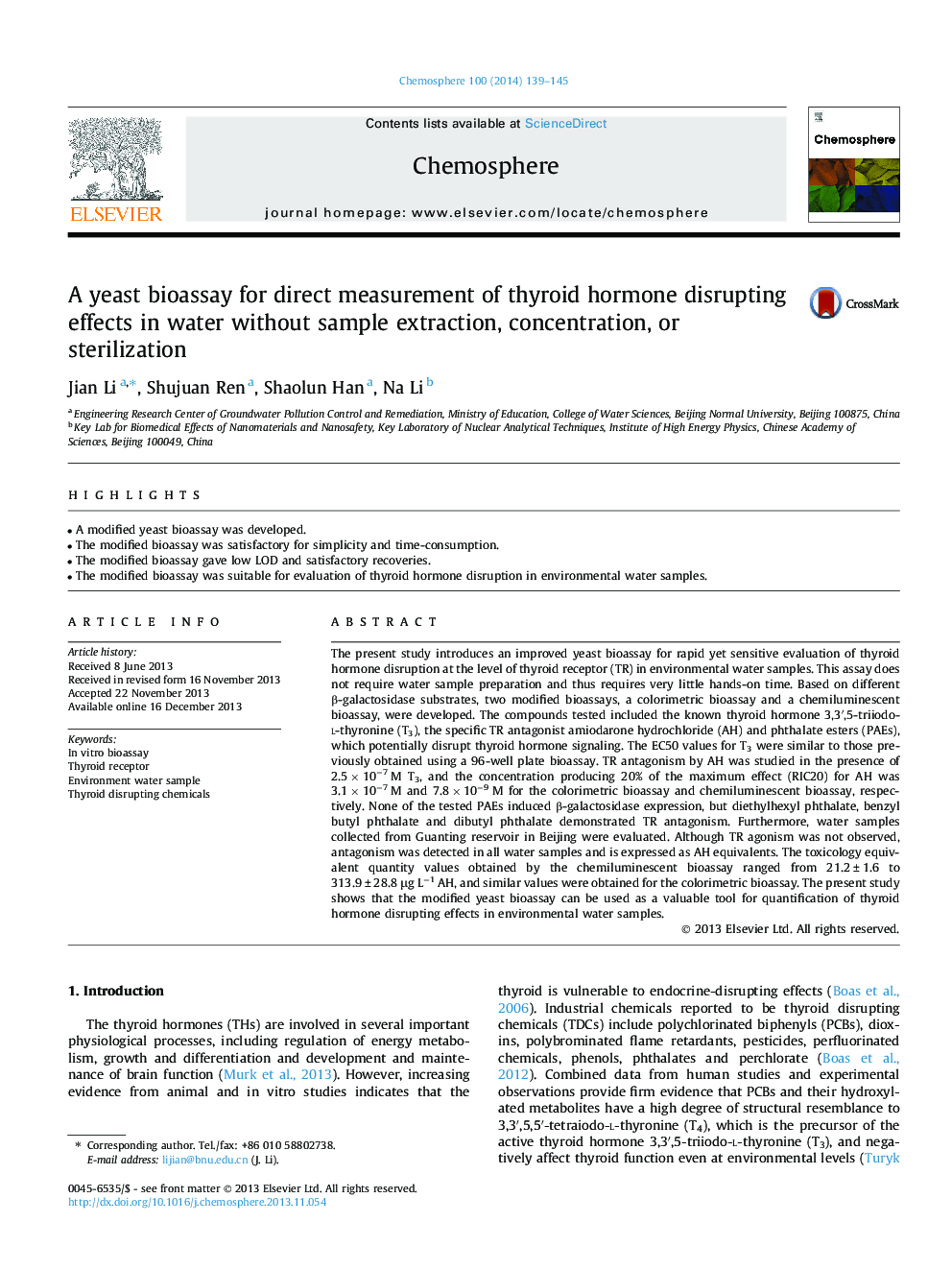| Article ID | Journal | Published Year | Pages | File Type |
|---|---|---|---|---|
| 6309478 | Chemosphere | 2014 | 7 Pages |
Abstract
The present study introduces an improved yeast bioassay for rapid yet sensitive evaluation of thyroid hormone disruption at the level of thyroid receptor (TR) in environmental water samples. This assay does not require water sample preparation and thus requires very little hands-on time. Based on different β-galactosidase substrates, two modified bioassays, a colorimetric bioassay and a chemiluminescent bioassay, were developed. The compounds tested included the known thyroid hormone 3,3â²,5-triiodo-l-thyronine (T3), the specific TR antagonist amiodarone hydrochloride (AH) and phthalate esters (PAEs), which potentially disrupt thyroid hormone signaling. The EC50 values for T3 were similar to those previously obtained using a 96-well plate bioassay. TR antagonism by AH was studied in the presence of 2.5 Ã 10â7 M T3, and the concentration producing 20% of the maximum effect (RIC20) for AH was 3.1 Ã 10â7 M and 7.8 Ã 10â9 M for the colorimetric bioassay and chemiluminescent bioassay, respectively. None of the tested PAEs induced β-galactosidase expression, but diethylhexyl phthalate, benzyl butyl phthalate and dibutyl phthalate demonstrated TR antagonism. Furthermore, water samples collected from Guanting reservoir in Beijing were evaluated. Although TR agonism was not observed, antagonism was detected in all water samples and is expressed as AH equivalents. The toxicology equivalent quantity values obtained by the chemiluminescent bioassay ranged from 21.2 ± 1.6 to 313.9 ± 28.8 μg Lâ1 AH, and similar values were obtained for the colorimetric bioassay. The present study shows that the modified yeast bioassay can be used as a valuable tool for quantification of thyroid hormone disrupting effects in environmental water samples.
Related Topics
Life Sciences
Environmental Science
Environmental Chemistry
Authors
Jian Li, Shujuan Ren, Shaolun Han, Na Li,
